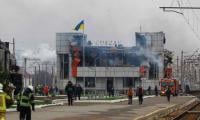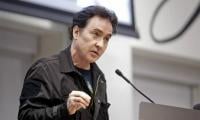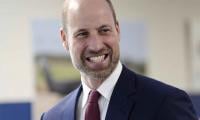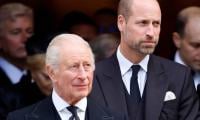Last week I wrote about how PM Khan’s five key bets can help him and the PTI win 2023. If he wins those five big bets he has made, there is little other than acts of God that will prevent him from securing a second term. But this is God’s country. And those five bets are far from certain. What would need to happen for Nawaz Sharif and the Opposition to remove the PM from PM Khan’s title?
Pakistan’s opposition has been in a state of incredible and utter disarray since 2018. The convergence of a family-run political enterprise (PML-N) in generational flux, the genuine popularity of a new, untested leader (Imran Khan), the powerbrokers’ rank and file’s fatigue with traditional politicians and a marginal manipulation of election night outcomes was enough to evict the PML-N from power – an outcome that had seemed incredibly unlikely as recently as the spring of 2016. Things can change pretty fast in Pakistan, and as the Pandora Papers take over the public discourse, it isn’t unironic that PM Khan has about as much time left in his term as PM Sharif did in 2016, when the Panama Papers were first released. About two years.
The Panama Papers, the so-called Dawn Leaks, and some foundational imbalances in civil-military power were ingredients in the stew that brought down the House of Ittefaq – but in a country where political fortunes turn, turn, and then turn again what would need to happen for the PML-N to help turn them as early as 2023? Three questions are going to be instrumental for the PML-N to make a comeback to Islamabad.
First, and by far the most important, is the question of balance. Can the PML-N manage its twin narratives without being torn apart? Can the half performative – half ferrealz dichotomy in the PML-N continue to deliver the fruit that may be its greatest strength? Can the PML-N’s anti-establishment soul continue to blossom and grow with its pro-establishment heart? Some folks among the powerful have liked the delivery aspect of the PML-N so much that they have spent over two decades trying to figure out how Shahbaz Sharif – the COO – may be enticed into abandoning Nawaz – the CEO. The two-pronged equation at the top of the PML-N has tended to work to good effect for essentially one reason: their bond is unbreakable. The Nawaz-Shahbaz connect is otherworldly. In a land of uncertain bets, this one is as close to a sure thing as any ever will be.
But the Maryam Nawaz Sharif factor is relatively new, and it complicates the Sharif brothers’ equation from ballet to breakdance. From classic and traditional (boring) to fresh and unpredictable (thrilling). Unburdened by any real understanding of the compromises and hard work that enabled her father and uncle to rule the country for substantial stretches, the Princess Queen of the PML-N has a more linear and direct approach to politics: power shared is no power at all. She won’t share. Especially not with unelected public servants. But maybe not even with the relatives to whom she and her father owe their technical political capability.
Technical political capability is what happened in the Cantonment Board elections – where the PML-N won a scary large share of the overall votes, and a not-too-shabby number of seats. Technical political capability is what PTI wallahs know as electables – a shorthand among the old school Insafian crowd, for the smelly, non-reformist traditional politicians whose money and vote banks are valuable enough to justify as a means to the PTI’s supposedly reformist ends. The single greatest luxury that Uncle Shahbaz and Cousin Hamza afford Maryam Nawaz Sharif is an in-house stable of ‘electables’ that are not only long-standing members of the PML-N, but that are largely (though not permanently) loyal to the man that puts the N in PML-N.
The complex weave of patronage, electoral calculation, currying favour with the local uniformed officials, management of the local bar association and the local press club and engagement with the relevant Pir and Sufi order is an innate strength that needs a national ‘story’ to hang its hat on. For three decades, this ‘story’ has been coherent and unified – the Sharifs deliver: money for patronage and roads to get to where Punjabis need to get to. But Nawaz Sharif’s disqualification from office in July 2017 has caused a major twist in the story. The Sharifs are now a two-narrative party: the party that delivers, and the party that will ostensibly deliver Pakistan from the institutional disequilibrium that is ostensibly the country’s single largest challenge. Can the PML-N manage its twin narratives without being torn apart?
Second, is the question of big tent coalition management. From the moment Shaheed Benazir Bhutto was assassinated in December 2007 to roughly the middle of his last turn as PM, Nawaz Sharif became the principal guardian of Pakistani federalism. There were two things that were informing this new role. The first was the terrorist assassination of SMBB – leaving a gaping hole in national leadership. The second was the lessons of the 1990s and the spirit of the Charter of Democracy. Between 1999 and 2007, Nawaz Sharif genuinely came to understand the fallacy of centralised power in the Pakistani polity. His friendships with the likes of Mehmood Khan Achakzai, Hasil Bizenjo and Pervez Rashid were not a product of political expediency, but of a genuine evolution in his mindset. Former President Asif Ali Zardari rightly gets a lot of credit for the 18th Amendment, but it was Nawaz Sharif’s steady federalism that delivered both the amendment and the 7th NFC Award. Shades of the same federalism are omnipresent in how the PML-N has sought to engage with a diverse array of actors, from PkMAP, to the JUI-F, to the JUI-N, to BNP-M, to even the PTM.
The difference is the capability to demonstrate federal principles. From 2008 to 2013, as the rulers of the Punjab, the Sharifs were able to demonstrably put their money where their mouth was – surrendering a substantial portion of fiscal claims to win Balochistan over during the NFC negotiations. Today, it holds no purse strings other than the Sharifs’ private wealth. Can the PML-N generate enough trust and confidence among at least half a dozen smaller parties to establish enough electoral and narrative coherence for a big tent coalition in 2023?
Third is the question of the regionalisation of the PML-N. Some may say the PML-N was never much more than a party of the heartland of Punjab. Yet the party has consistently been able to win a small but significant number of seats in Khyber Pakhtunkhwa, and in 2013 even in Balochistan. One long-term worry for Pakistani democrats and federalists should be the regionalisation of both traditional mainstream parties: the PPP, reduced not only to Sindh, but more specifically to rural Sindh; and the PML-N reduced, not just to Punjab, but to central and northern Punjab.
The big question is whether the PML-N can resist and prevent itself from becoming a regionalised faction rather than a national party. Can it find, invest in, and cultivate a coherent set of PML-N leaders in southern Punjab? Can it fill the vacuum that was left by the MQM in Karachi, in a free and fair election? Can it reignite the imagination of traditional PML-N strongholds in Khyber Pakhtunkhwa, like the Hazara Belt? In short, can it continue to be a credible national political party?
If the PML-N can answer the question of a balance between Nawaz-Shahbaz, the ability to build a wider national coalition, and the ability to appeal to voters outside of Sialkot, Gujranwala and Lahore – then its case for 2023 will be much stronger than it is today.
A renewed compact between the Sharifs and the establishment is (eventually) a foregone conclusion. The real challenge will be whether the PML-N can develop a compact with the PML-N itself.
The writer is an analyst and commentator.















